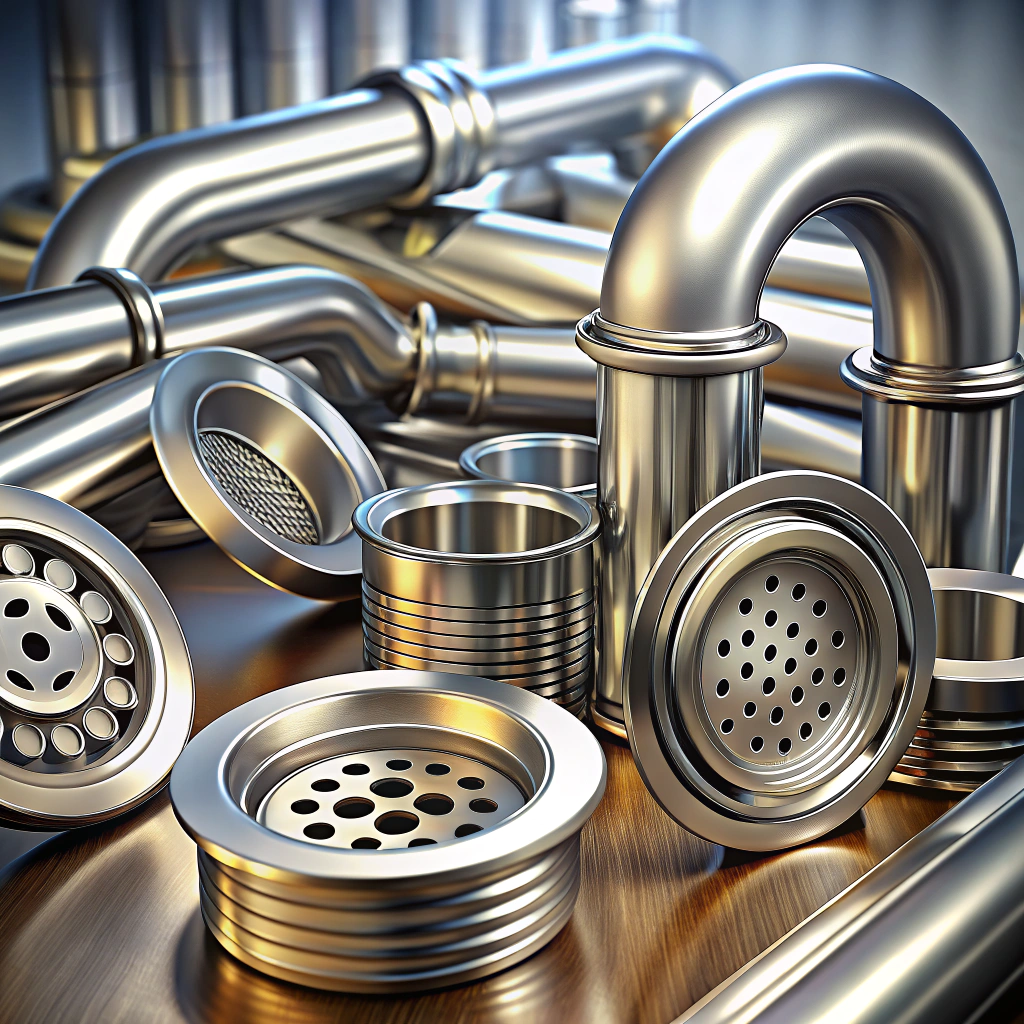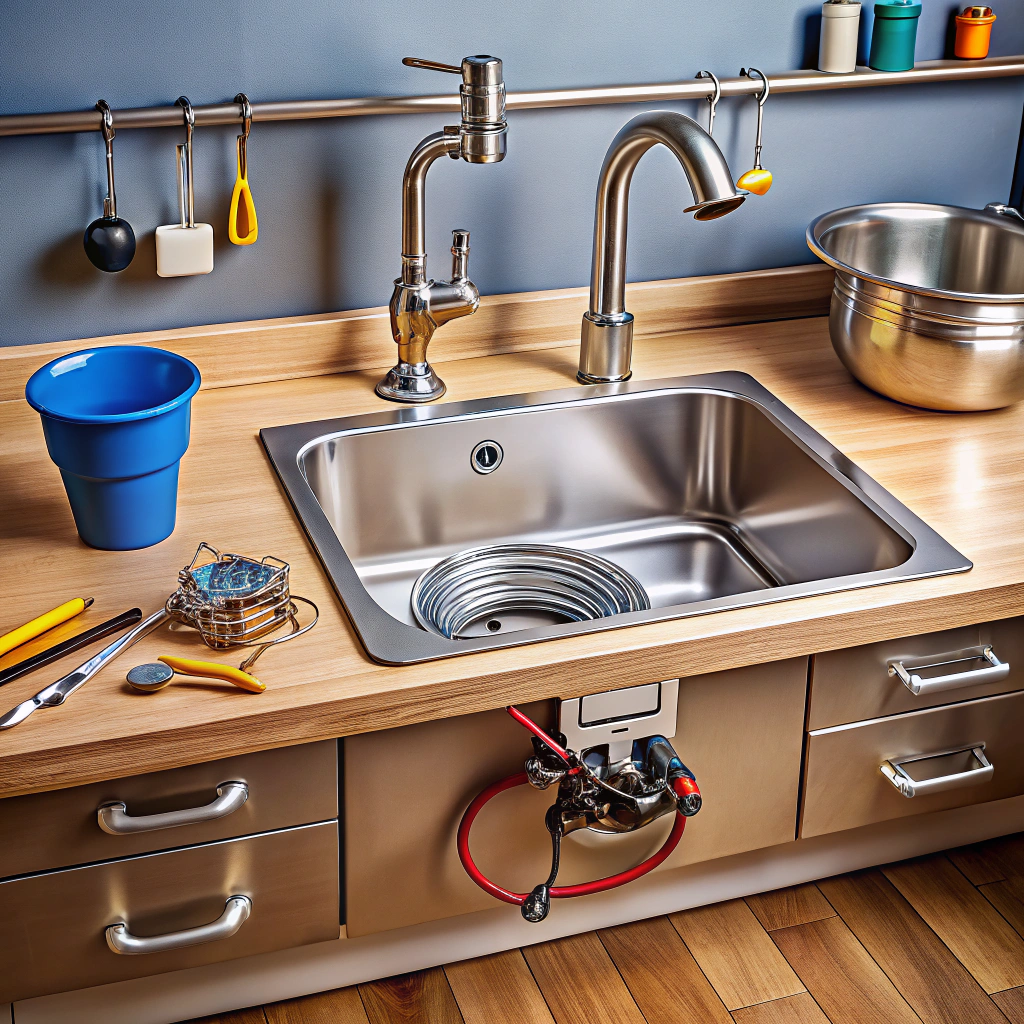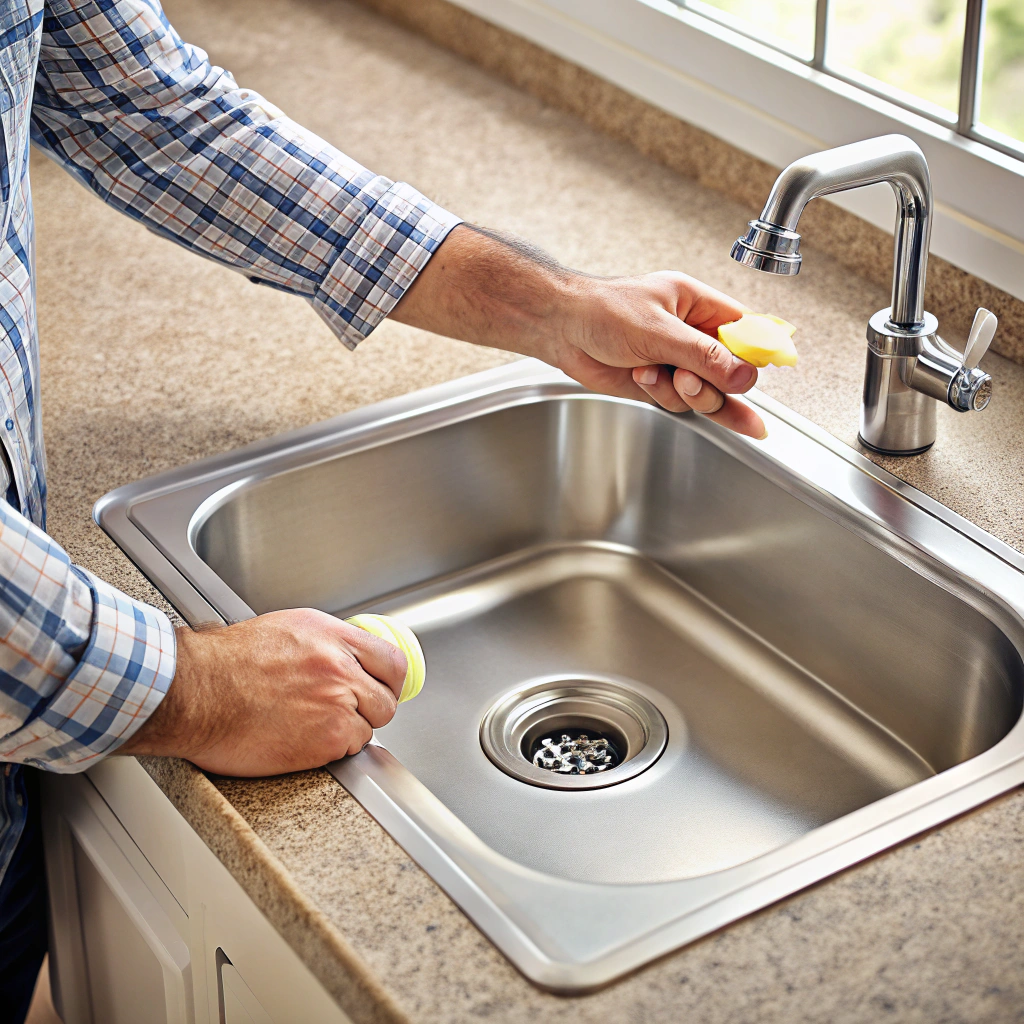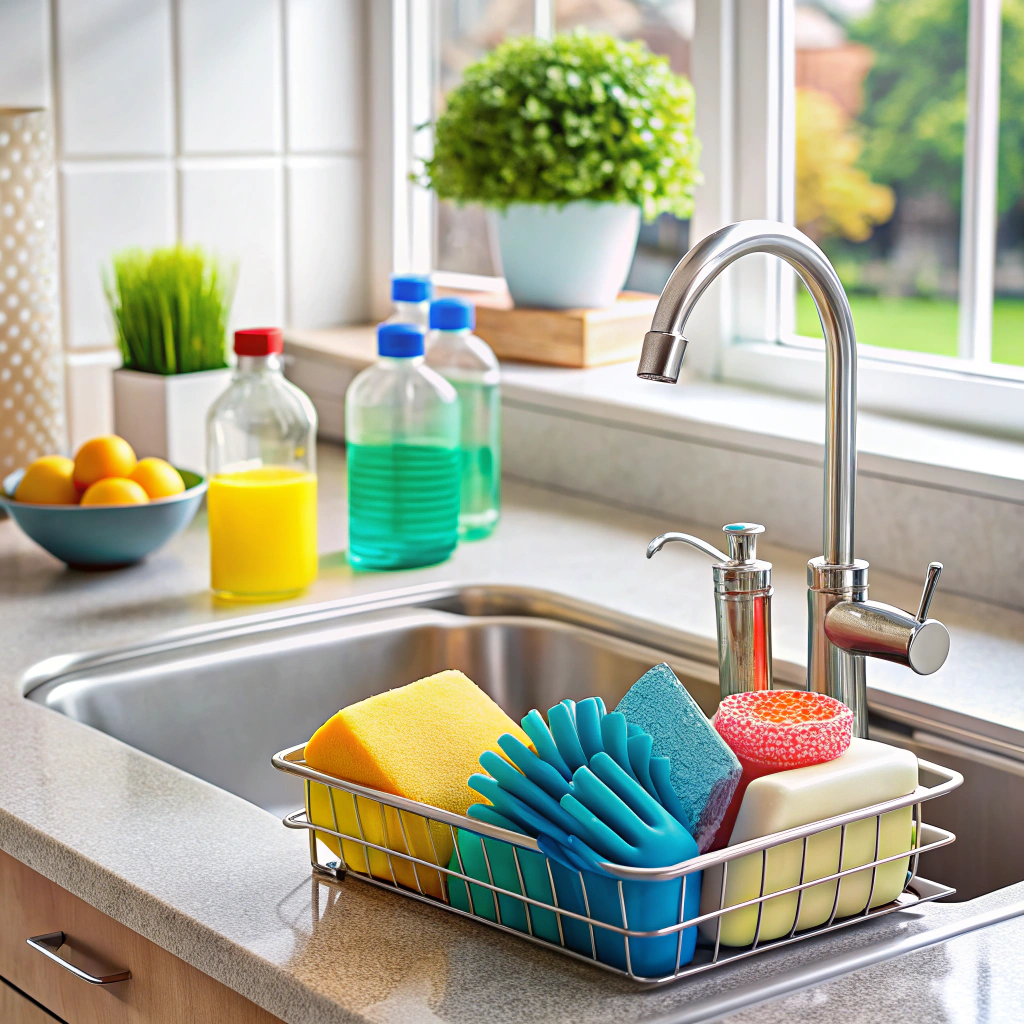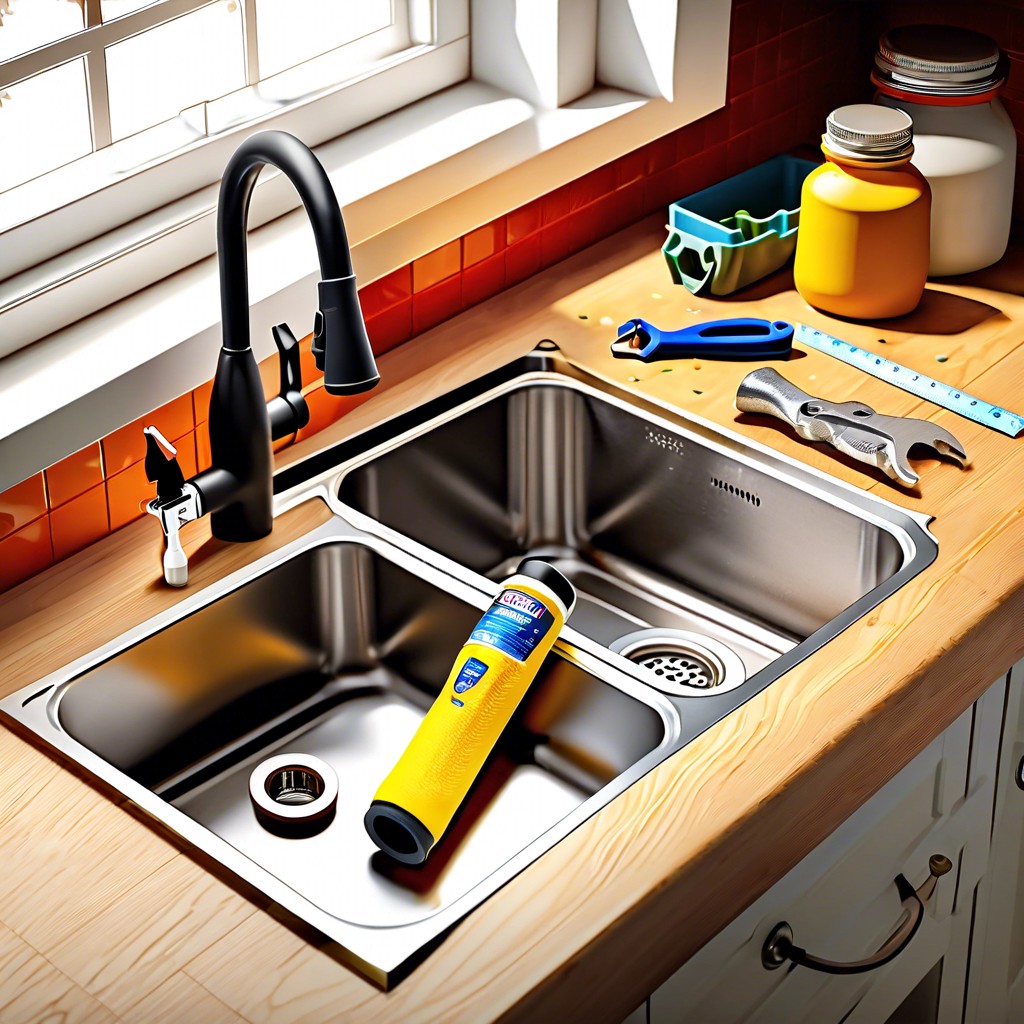Last updated on
In this buying guide, discover the best kitchen sinks to transform your cooking space with style and practicality.
Sinks are like the Swiss Army knives of the kitchen world—multifunctional and unexpectedly fascinating. Is stainless steel or granite the secret sauce for style and resilience? You’ll find out. Whether you’re a drop-in diva or an undermount enthusiast, this guide has got your back. Figuring out bowls, depth, or the mystical drain location? We’ve got all the deets to bowl you over. From must-have features and legendary brands to squeaky-clean maintenance tips, your perfect sink match is just a scroll away!
Key takeaways:
- Choose material: stainless steel, granite, or composite.
- Installation type: drop-in for DIY, undermount for sleekness.
- Opt for bowl configurations to fit your cooking style.
- Drain location impacts functionality and convenience.
- Budget wisely—balance cost and quality for best value.
What's Inside
Material Options: Stainless Steel, Granite, Composite
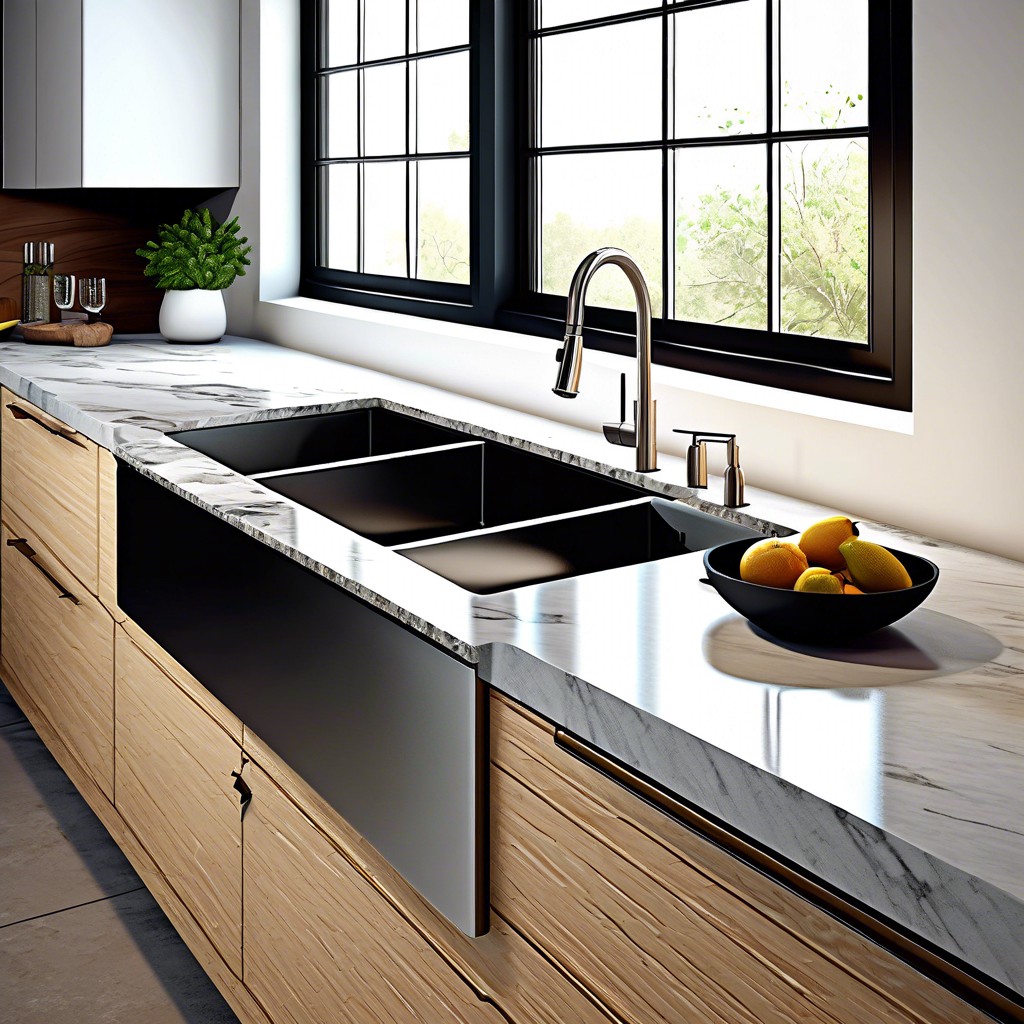
Stainless steel sinks are the rockstars of the kitchen sink world. They’re affordable, durable, and give you that sleek, modern look as if your kitchen just got a high-tech makeover. They’re also great for noise-free dishwashing, thanks to their noise-dampening capabilities. Perfect for when you’re sneaking a late-night snack and don’t want to wake up the entire household.
Granite sinks add an elegant touch, combining durability with style. They don’t get scratched or stained easily, so they’re perfect for those who treat their kitchen as an art studio. However, these heavy beauties might require a little extra muscle during installation. Consider it a free arm workout.
Composite sinks, made from a blend of materials like granite and quartz, are the peacekeepers, combining the best of both worlds. They offer the durability of granite with more style options, from classic to modern. They’re scratch-resistant, so no worries if you’ve ever dropped a fork with the enthusiasm of a percussionist.
Each material brings its own flair and functionality to the table. So, consider your kitchen habits, aesthetic tastes, and maybe even how often you think you’ll be dropping things into the sink, when choosing the right material.
Installation Type: Drop-in Vs. Undermount
Drop-in sinks, also known as top-mount sinks, are the ones you’d want if you enjoy a good, old-fashioned DIY project. They literally “drop” into the hole cut in your countertop and rest on the top edges. Easy to install and, frankly, a bit of a show-off with their visible rims, they’re perfect for wood or laminate counters where cutting precise edges might cause a hair-pulling tantrum. And for those on a budget, these little gems are usually more cost-effective.
Undermount sinks, however, are like ninjas—no visible rims, seamlessly blending into the countertop. They mount beneath it, giving you that sleek, modern look everyone has on their Pinterest board. These are great if you want to say goodbye to crumb-catching rims; just swipe crumbs straight into the sink. Ideal for granite or solid surface materials, though be warned: installation can be a tad more time-consuming and might require professional precision. It’s all about that flawless fit!
Bowl Count and Configuration
So you’ve got choices here: single-bowl, double-bowl, or even triple-bowl if you’re feeling adventurous. It’s not just about how many bowls but also how you use them. A single-bowl is great if you like space to do the cha-cha while you wash dishes. Perfect for large pots and pans that seem like they could be hiding a magician inside.
The double-bowl setup? Ideal for the multitasker, the kitchen juggler, if you will. One side for washing, one side for rinsing, or one bowl for soaking that lasagna dish of doom while you use the other for everything else. Definitely a mastery in kitchen choreography.
Triple-bowl sinks might sound excessive, but hey, more power to you, Tchaikovsky of dish cleaning! One bowl can have garbage disposal, while the other two handle the cleaner, non-mooshed activities. Configuration matters too: equal-sized bowls or a large and small combo. Choose one that complements your cooking style.
Opt for the lazy chef special: the low divide sink. It’s like the double-bowl but with a shallow center wall, making it easy to slide dishes back and forth, like bowling but without the strikes.
Sink Size and Depth
Big or small, the size of your sink will splash the whole vibe of your kitchen. Got a tiny kitchen? Go compact and make your countertops happy. Gourmet chef at home? Supersize it!
Depth is where the drama unfolds. Fancy stacks of dishes or washing that turkey-roasting pan? Opt for deeper sinks. They hide those dirty dishes like sneaky ninjas, but beware — your back might protest with extra bending.
A standard 8-inch depth works for most, but if your arms mysteriously stretch like a superhero, go deeper. Just don’t stalk neighborhood rumors about a mysterious kitchen portal.
Remember, bigger sinks can take up more cabinet space underneath, which might cramp your cleaning supply kingdom. Balance your need for sink space with storage wisely, lest you find dish soap invading pot territory.
Find harmony between size, depth, and your daily kitchen shenanigans.
Drain Location and Functionality
Picture this: you’ve just cooked a monstrous spaghetti dinner. You’re left with a battlefield of dirty dishes. Now, what if an oddly placed drain made your life even harder? Not cool, right?
Where the drain sits can make or break your sink experience. A rear-positioned drain gives you extra space for beating your own record in Tetris-dishes—more room for larger pots and less clogging. Center drains are the classic, reliable choice; solid all-rounders but a bit old-school.
And those offset drains? They’re like the rebellious teens of the drain world. They say, “No more water pooling right in the middle!” Why bother with a drain that floods your big plans?
Beyond location, consider functionality features like strainers or grates to keep that drain from swallowing your silverware. Plus, let’s not forget about ease of cleaning. You want the kind of drain that makes you think, “Wow, I actually enjoy doing dishes!” Ok, maybe not, but close enough.
Unique Features and Accessories
Innovation in kitchen sinks? Oh yes, it’s a thing. Say goodbye to the plain, and hello to the extraordinary.
First up, built-in cutting boards are making waves. Fits right over the sink, these boards save counter space and make cleaning effortless. Chop, slide, rinse. Repeat.
Integrated colanders and rinsing baskets are fantastic for multitaskers. Rinse veggies, drain pasta, all without fumbling around, searching for devices like a harried, culinary archaeologist.
Love a clean counter? Custom-fit covers can disguise your sink, extending your work surface and keeping nosy guests wondering where all the dirty dishes went. Magic, or just clever design?
And for the tech enthusiasts, touchless faucets and built-in soap dispensers provide a futuristic vibe. Swivel your way into water conservation!
Lastly, consider soundproofing features like undercoatings or pads. No more waking the entire household during midnight snack escapades.
Choose wisely, friends. Or hey, choose wildly! After all, your sink should be as dynamic as you are.
Metal Thickness and Durability
When it comes to kitchen sinks, think of metal thickness as its suit of armor. The thicker the metal, the more battles it can withstand. For instance, an 18-gauge stainless steel sink is ready to handle anything from Grandma’s cast iron skillet to your notorious habit of dropping pots. It’s like having a bodyguard for your kitchen!
On the other hand, a 22-gauge sink might feel a little more, well, delicate—as if it’s more suited for a spa day with feather dusters than a full-on cooking showdown. Thicker steel is not just about durability. It also stands firmer against dents and dings and happily avoids the loud things-go-bump-in-the-night symphony thinner sinks might produce.
So, investing in a thicker sink isn’t just about longevity; it’s about keeping your space sounding like a gourmet kitchen and less like a heavy-metal concert. Consider it your sink’s silent way of saying, “Bring it on!”
Budget Considerations
Budgeting for a new kitchen sink shouldn’t feel like breaking the bank, or worse, a gushing pipe of financial despair. Know your limits, but remember you’re investing in a sink, not a gold-plated bathtub.
First, explore the Goldilocks theory of pricing: not too cheap, not too expensive. Low-end options can seem tempting, but might invite unwanted ruckus like rust or dents. High-end can mean lavish features, but ask yourself if you really need a sink that doubles as a Wi-Fi hotspot.
Consider the material. Stainless steel is generally economical and durable. Granite composite and fireclay, on the other hand, might whisper sweet nothings to your kitchen but require a fuller wallet.
Think practicality. Single bowl sinks are often less costly than double bowl models and save space. Do you really need a twin tub extravaganza when washing a single lonely spoon?
Look into hidden costs. Sometimes sinks come with accessories like strainers or cutting boards. Bundles might seem pricey but could save money compared to buying separately.
Finally, check for warranties, because nothing says peace of mind like a guarantee that your sink won’t go AWOL as you rinse a colander of kale. Balance is key; choose wisely and spend smartly. Your future dishwashing self will thank you.
Popular Brands and Models
If kitchen sinks were a high school, these brands would definitely be the cool kids. Starting with Kohler, a brand that’s like the steady friend who’s always there when you need them. Known for durability and style, Kohler offers a wide range of options from stainless to enameled cast iron. Their farmhouse sinks are a fan favorite, much like that one hit song everyone knows the lyrics to.
Then there’s Moen. Remember the kid who always had the latest gadgets? Moen is the sink version of that. They boast sleek designs and cutting-edge tech features, like sinks with integrated touchless faucets. Perfect for those who enjoy living in the future, one hand-wash at a time.
For those who like to go against the grain, try Blanco. This brand’s granite composite sinks are as tough as a bear in sunglasses. They can resist scratches like a superhero deflects punches. A favorite for those who want something different yet reliable.
If you’re all about budget without sacrificing quality, Elkay has you covered. Their variety of affordable double-bowl models makes them the sensible and practical choice, much like wearing both socks.
And let’s not forget Franke, with their stylish yet practical range perfect for anyone who wants to add a touch of European elegance to their kitchen—like wearing a beret while you sauté onions. Each of these brands offers models that differ in size, material, and installation style. The trick is finding the one that fits your home and lifestyle like a glove. Or a really nice apron.
Maintenance and Longevity
Sliding into the chores department. Keep your sink gleaming and ready to handle a barrage of dirty dishes with a few simple tricks.
Regular cleaning: Give your sink a daily quick scrub-a-dub-dub. This helps prevent grime buildup and keeps stains away. Warm soapy water is your trusty sidekick.
Banish scratches: Stainless steel lovers, never fear. A little baking soda paste and soft cloth work wonders. Granite and composite fans, stick to gentle, non-abrasive cleansers.
Mind the mineral deposits: Vinegar is your friend for tackling hard water spots. Just don’t let it linger too long, or your sink might think you’re starting a science experiment.
Rust prevention: A dry sink is a happy sink. Keep a towel handy to dry after use. Rust is shy and not a fan of dry surfaces.
Protective mats: Consider using mats or grids to protect the bottom of the sink—because nobody wants a scratched sink crying “boohoo.”
Seal the deal: If you’ve got a granite composite, a sealant application every few years can keep it looking factory-fresh.
Remember, a little TLC goes a long way. Treat your sink like the superhero sidekick it is; it’s ready to shine at a moment’s notice.
